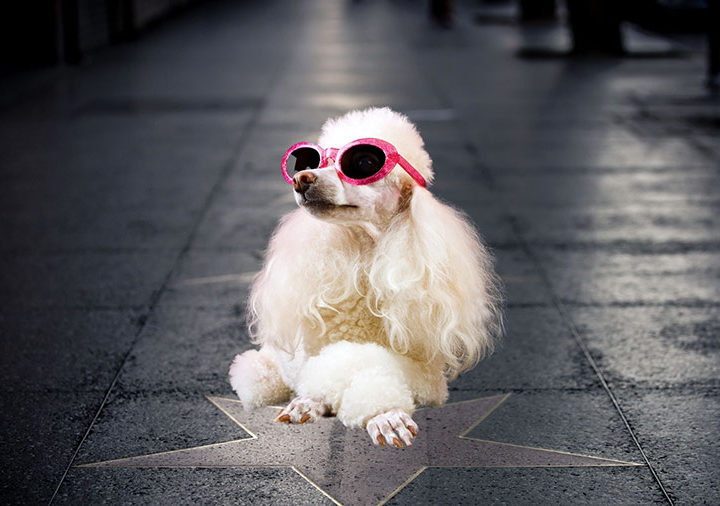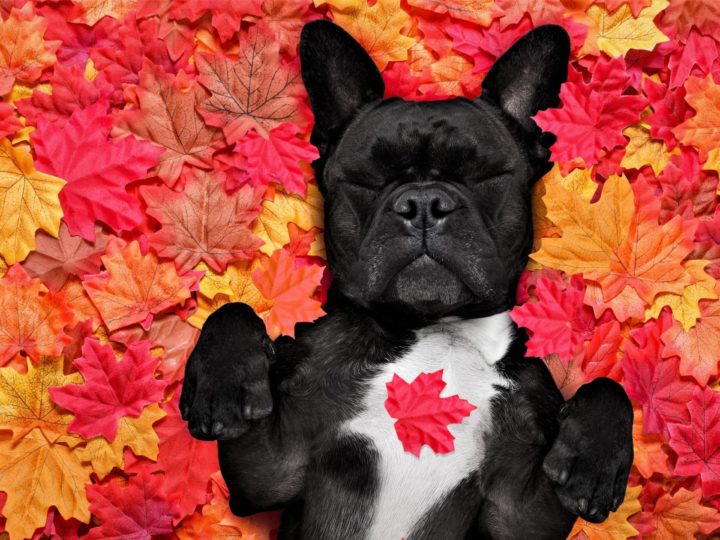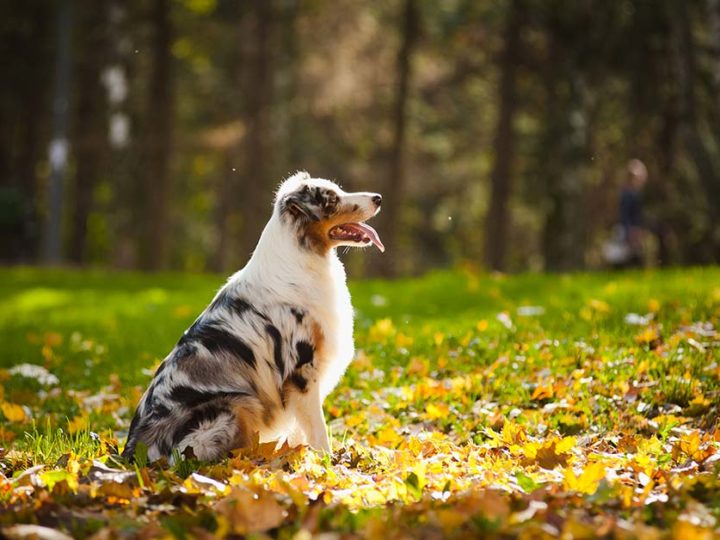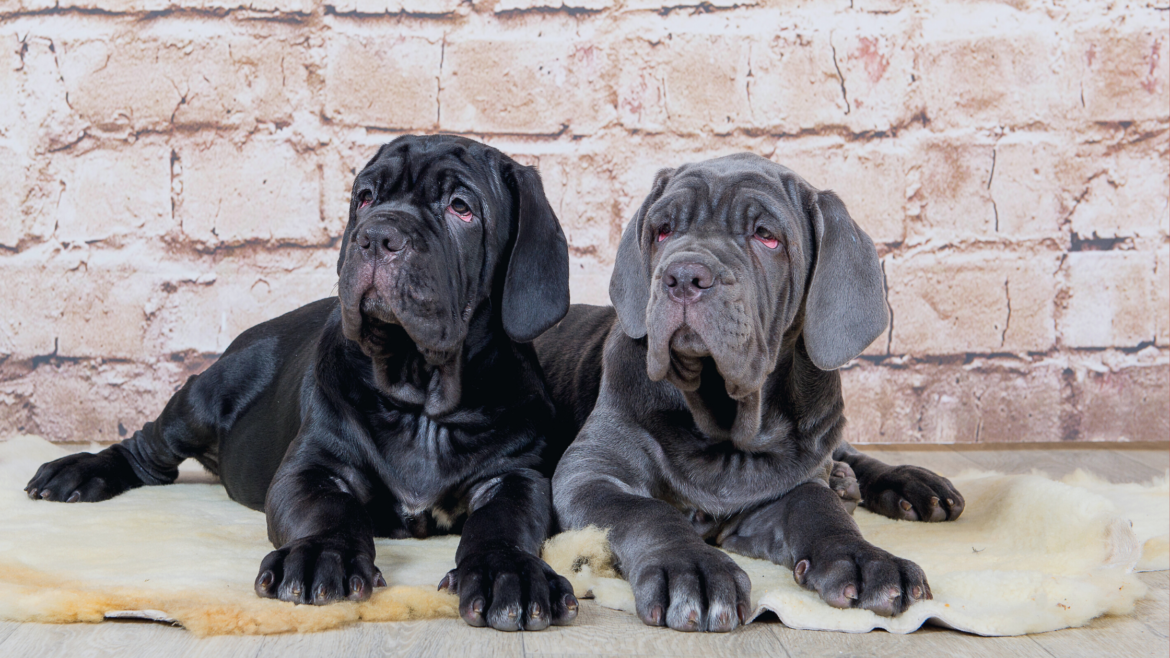
The Neapolitan Mastiff is one of the most popular dog breeds in Italy: its character, its penetrating eyes and its unmistakable muzzle make it the perfect king of the house. However, with its growing popularity, it has become a problem because it is not a suitable dog for all audiences and as we often remind you, it is better to consult a dog educator before adopting one.
But make yourself comfortable, because now we will tell you everything we know about the Neapolitan mastiff, friendliness and authority.
The ancient origins of the breed
The Neapolitan mastiff is a breed of dog that spread in Italy in the 19th century. The breed was created by crossing English mastiffs with Spanish dogs and today it remains a symbol of “Italianity”. Born of the rural molossians of rural southern Italy, it is a direct descendant of the great Assyrian-Babylonian molossians, who spread throughout Europe thanks to the Romans. Due to its long history, the Neapolitan Mastiff represents a true “living monument” for lovers of purebred dogs.
He was assigned the task of guard dog during the Bourbon period where he was known as “Cane da presa” and was often recruited as a soldier against the Savoyard army during pillages. His maxillary strength is around 80 kg. At the beginning of the 20th century it was on the verge of extinction but was rediscovered in the Naples and Avellino campaigns during the post-World War II period, as you can read here.
In the De re rustica of Columella, from the 1st century AD, they describe it, together with the Maremmano-Abruzzese sheepdog, as the best guard dog for properties and patios.
Beautiful and impossible: the characteristics of the Neapolitan mastiff
Columella described the mastiff also as: “con il capo tanto grande che sembri la maggior parte del corpo, con le orecchie abbassate e pendenti, con occhi neri o glauchi, lucenti di una luce fiera, con il petto ampio e peloso, spalle larghe, zampe tozze e irte, coda corta, spesse callosità” (“with a head so large that it seems to be most of the body, with low and hanging ears, with black or glaucous eyes, shining with a proud light, with a broad and hairy chest, broad shoulders, stumpy and shaggy legs, short tail , thick calluses”)
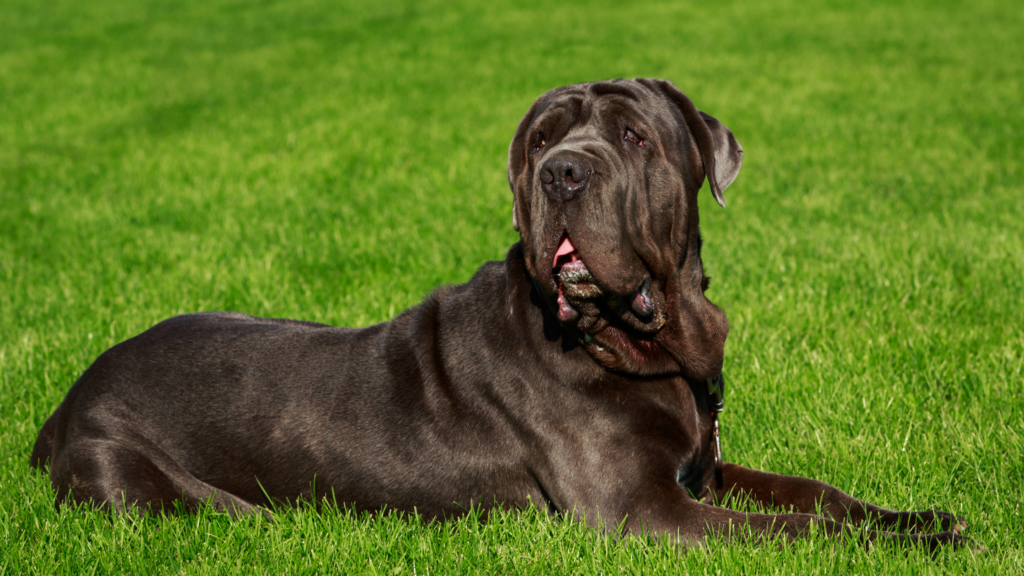
Indeed, Neapolitan Mastiffs have a broad head, a medium-length muzzle, a broad chest and a muscular body. They are normally black or dark brown with light brown tinges. The coat can be wavy or curly but it is not a crisp hair. They often have a dense undercoat and a silky light brown to dark brown coat on the head and legs with shades of the same natural coloration giving a distinctive appearance.
It is large size, with the front part higher compared to the area of the legs; its main characteristic is short, opaque and very dense hair: it appears with thicker coat on the back and legs that are finer on the ears, head, breasts and belly.
As AKC indicates, the breed standard is first drawn up and recognized in 1949:
- Short, heavy build with a trunk longer than shoulder height.
- Height of the males at the withers of 65 to 75 cm and of the females between 60 and 68 cm.
- Bust length 10% bigger than shoulder height.
- Head length equal to 3/10 of the height at the withers.
- Ratio between skull and mouth of 2 to 1.
The character of the Neapolitan mastiff
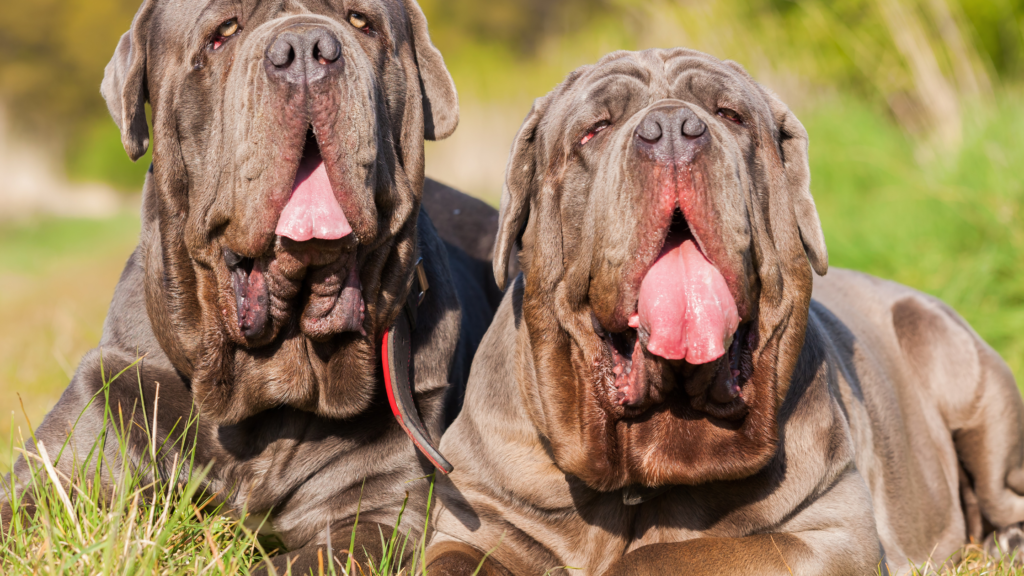
Mastiffs have great strength and a lot of stamina; they are loyal, intelligent, good-natured and worthy of the most complete trust. They have a strong and loyal character towards the family, they do not attack or bite if they are not provoked. They are resourceful and intelligent and are great defenders of property and people with a vigilant, noble and dignified behaviour. However, adopting a Neapolitan Mastiff is not an option for everyone for two main reasons.
First of all, it is a very strong and very large dog and can frighten children or those who are not comfortable with large dogs. In addition, the mastiff is as loyal as it is distrustful of strangers and, therefore, socialization needs to be carefully worked on while they are still puppies.
Finally, the Neapolitan Mastiff needs a lot of health care. He drools a lot and his characteristic wrinkles can become a nest of bacteria and dirt that can be dangerous to his health.
Dog’s care
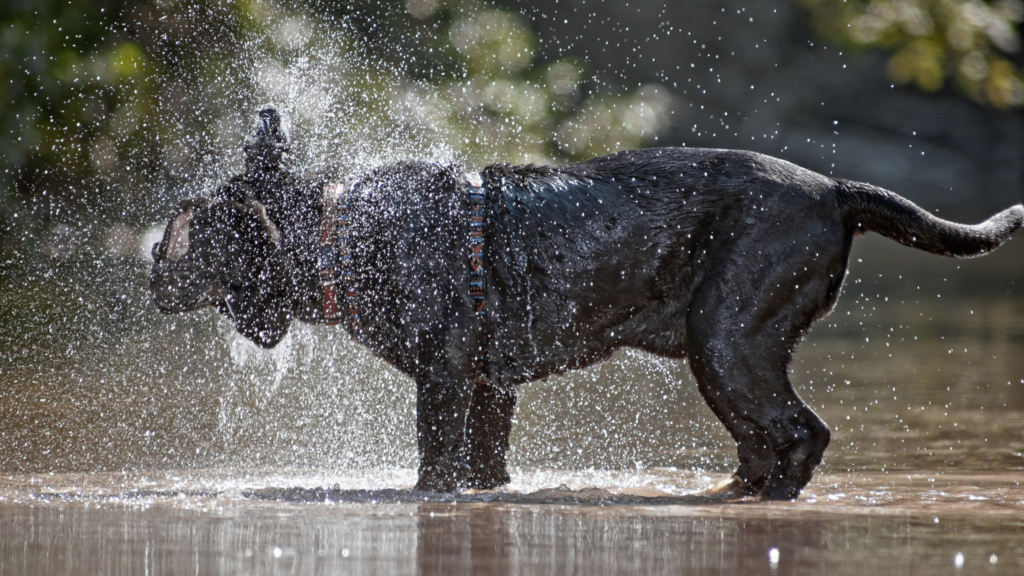
Being a dog of enormous size, the mastiff tends to gastric torsion. To avoid this problem, a correct diet is essential. The caretaker of the mastiffs should subdivide the daily food rations into small portions and thus avoid physical exercise after eating. The diet must be balanced and detailed with an adequate dietary program, so that there is neither a lack nor an excess of nutrients in order to preserve the health of your bones.
You must thoroughly care for the folds and wrinkles of your majestic friend in order to avoid skin infections. By checking them regularly, you can avoid some serious problems.
When eating, your mastiff can accumulate dirt under the wrinkles, so you can use one of our wipes after each meal. Despite their size, these guardians have very sensitive skin and it is important to use bath products with a neutral pH and a disinfectant action such as our Sanitizing Shampoo. After cleaning the mouth, make sure to remove all moisture, as this could cause infections. On the other hand, if you let your four-legged friend’s folds get too dry, you can cause skin irritations and rashes. Therefore, we advise you to apply a little Yuup! Soothing and lenitive lotion inside these folds after thorough washing. In addition, the eye contour area must be kept clean thanks to, for example, a specific lotion.
We hope that now you have the clearest ideas about this wonderful breed and, if you want to laugh a little, think of the cute dog from the Italian movie “Mia moglie è una strega!”




